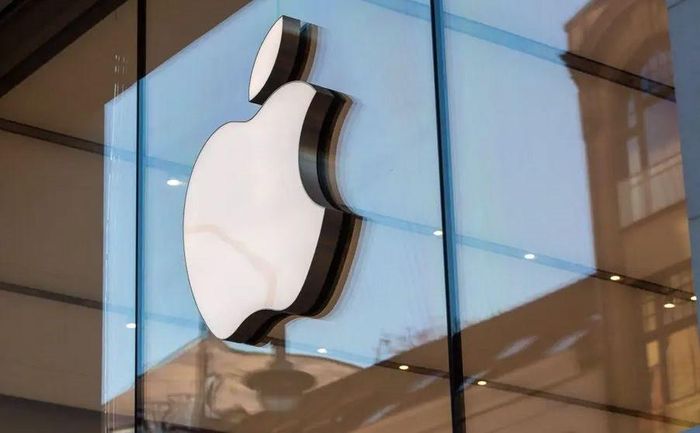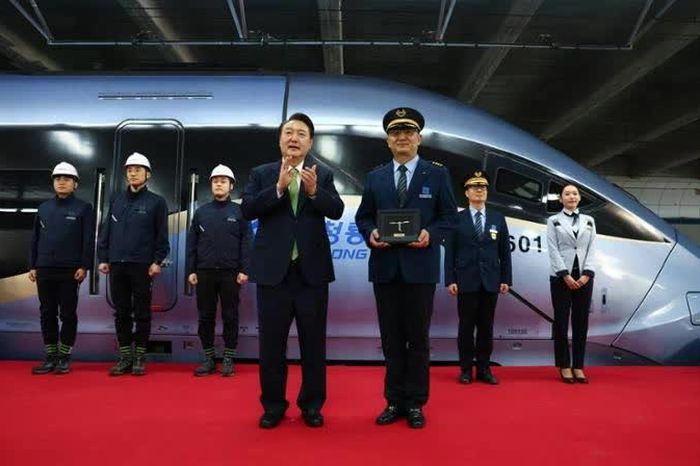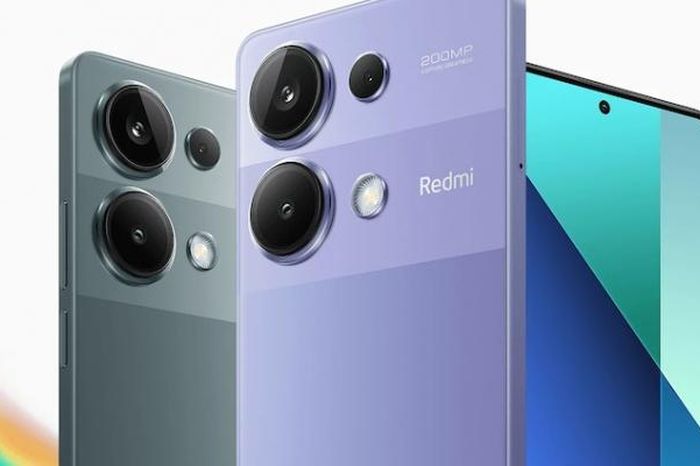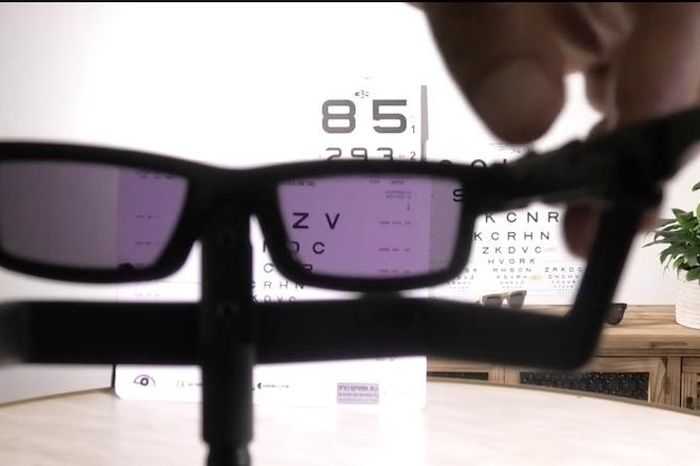Apple considers creating a home robot as the 'next big thing' after killing off the electric car project
Apple engineers are considering developing a robot that can observe users around the house, Bloomberg reported. They are also exploring a home desktop device that uses robotic technology to rotate the screen, a project more advanced than mobile robots.
The idea behind this smart screen robot is to simulate human head movements, such as reactions during a FaceTime session. It will also include the feature to zoom in on a specific person in a crowd during a video call. Bloomberg said this device initially attracted the attention of Apple senior leaders many years ago, although they still disagree on whether to continue the project or not.
The report on Apple's new efforts comes after a series of recent unfavorable news for the company. From the beginning of 2024 until now, Apple has suffered from declining iPhone sales in China, a fine of nearly 2 billion USD in the European Union (EU) and an antitrust lawsuit from the US Department of Justice.
At the end of February, Apple scrapped its decade-long project to produce self-driving electric cars, shifting its focus to building artificial intelligence (AI) products. Apple has been criticized for lagging behind in AI compared to OpenAI, Microsoft and Google, which have all released chatbots.
Betting on home robots could be an attempt to regain Apple's inspiration for new product development. According to the report, the company began exploring robotics in 2019. At that time, Doug Field (currently CEO of electric cars at Ford) was leading Apple's robotics project and with other leaders in the household products sector is involved in researching things like quiet indoor drones.
According to Bloomberg, after Doug Field left the company in 2021, Apple's robotics development efforts focused on in-house products. One idea Apple has explored is robots that could do chores like washing dishes and be used to make video calls. However, this idea was shelved because of technical difficulties, according to Bloomberg.
It's still unclear whether Apple's robot will reach consumers. However, Apple seems to have laid the foundation. According to Bloomberg, at least one engineer who used to be on the hardware team of the electric car project has been transferred to the home and robotics department. Sources also say that SafetyOS, the operating system that gives cars self-driving capabilities, could technically be reused for robots.
However, home robots are nothing new. For example, Roomba is a popular automatic vacuum cleaner created by iRobot that Amazon tried to acquire in 2022. Smart speakers and thermostats are also common in many people's homes. Meanwhile, Apple's latest product, Vision Pro mixed reality glasses, received mixed reviews.

Apple's electric car project is a prime example of the company's indecisiveness, technological challenges and harsh market realities. Apple wasted an opportunity that could affect its future.
Around 2014, Apple had a plan to diversify revenue and chart a future beyond the iPhone through an electric car project.
At that time, it seemed that the automobile market would be the next "battlefield" for companies in Silicon Valley (USA), especially in the field of self-driving car technology. Thanks to the efforts of Tesla and others, it is becoming clear that cars are essentially becoming mobile computers.
It felt like the perfect opportunity for Apple: A segment ripe for disruption, transformative with a smart combination of hardware, software and services.
Apple can design the most beautiful car on the road, develop its own underlying operating system, and sell accompanying services like self-driving features, Apple Music, TV+ video streaming.
However, Apple's electric car project was hindered from the beginning by indecision and dissent, technological challenges and harsh realities in the auto industry.
Apple CEO Tim Cook and other leaders disagree on what strategy to pursue, including whether to build an electric car or not, as well as the minutiae of what to do. car interior. A major point of contention within Apple is the car's level of automation. The scale ranged from 0 to 5, and Apple's goals changed several times throughout the project. In addition, the outlook for the electric car market in general is also dim.
Apple's belief that it could create a better electric car than Tesla and the rest of the car industry led to the demise of the decade-long project.
When Apple started contemplating electric cars about a decade ago, there were two main schools of thought on how to proceed:
1. Build a less ambitious electric car with self-driving features similar to Tesla models. That means the electric car can drive itself on highways and some roads but not everywhere.
2. Change the world with fully self-driving cars, taking passengers from point A to point B without driver intervention, making it look different from anything seen before.
Of course Apple chose the second approach and that's the big problem. Years ago, the company thought it could solve the problem of full self-driving that today's auto industry is still struggling to handle, while also introducing groundbreaking design. That challenge proved too difficult to overcome, even for Apple.
Now, you can understand Apple's arrogance around 2014. At that time, Apple had just turned the smartphone, tablet, and music streaming markets upside down and was about to launch the Watch, a product it thought would Forget about Swiss watches.
Apple wants to do the same thing with cars. With that in mind, if Apple were to introduce a Tesla electric car clone it would make no sense and not revolutionize the industry. However, such an electric car could still reflect design cues from Apple and be fully integrated into the company's product ecosystem. That's not a bad recommendation for Apple fans.
By the time Apple realized its mistake a few years ago, it was too late. All the design work was focused on an electric car without a steering wheel or pedals. The company has invested billions of dollars in developing Level 5 self-driving systems (the highest level of self-driving). Everything is predetermined.
According to one person involved in the decision-making, it's as if Apple tried to skip all of the original iPhone models and go straight to the iPhone X. Instead of trying to make the car a good enough human interface Using Apple, the interior and exterior are designed by the legendary Jony Ive (former Apple design director), the shopping experience is similar to the iPhone, the company has bet on the wrong direction: Automation.
There are other big problems with Apple. That includes the project's enormous cost and its inevitable price tag for consumers, as well as the small (or non-existent) profit margins that the eventual electric car might yield. Beyond these are indecision among Apple's executive team and the challenges inherent in auto manufacturing. However, it was arrogance that ruined Apple's efforts.
Competition in the automobile market is much more difficult than in smartphones, computers and MP3 players. The auto market has been evolving for more than a century and has more formidable competitors as well as a more complex supply chain that requires a lot of capital. Even trying to create a replica of a Tesla electric car is a gamble, let alone producing a vehicle that could change the industry. But Apple could have done the first thing.
Apple could simply follow the script of previous hit products without trying to complete everything at once. Don't forget that the original iPhone model lacked 3G, some of the first iPods didn't have color screens, and the Apple Watch wasn't waterproof until the second generation.
With cars, Apple could have brought something to market, sold hundreds of thousands of cars, and then collected enough data needed to build a viable self-driving platform.
The end of the electric car project means Apple CEO Tim Cook lost another breakthrough after succeeding the legendary Steve Jobs.
The Apple Watch that cements Tim Cook's legacy still has the potential to revolutionize healthcare. However, currently, it is a spin-off product of the iPhone. AirPods are a fun accessory, but that's about it. Even Vision Pro is just an extension of existing platforms within the company.
In that context, scrapping Apple's electric car project is not a mistake, especially because it frees up resources to focus on new AI features. It is expected that Apple will introduce new AI features on iOS 18 during the global developers conference taking place from June 10 to June 14.
Apple now needs to find something else to boost revenue, such as home robots. In addition, Apple is researching a number of ideas such as augmented reality (AR) glasses, AirPods with AI and cameras, smart glasses and rings, foldable iPads and touch-screen Macs, according to Bloomberg.
Apple could certainly push further into healthcare or enter new categories, such as home energy. However, these are thorny industries with many regulations.
You should read it
- Visit the 8 most majestic stores in the world of Apple
- Fix Apple ID error disabled
- 12 interesting products for Apple
- Will Apple's slander 'i' disappear?
- Create an Apple ID, register an Apple ID account for less than 3 minutes
- How to change Apple ID password?
- Apple is about to encroach into the creative AI segment with the 'super project' Apple GPT
- How to Set Up Apple TV
May be interested
- Robot milliDelta robot is set up with roles in production and medicine
 a millidelta robot developed at harvard university promises to open the era for applications in manufacturing and medicine thanks to its innovative creations.
a millidelta robot developed at harvard university promises to open the era for applications in manufacturing and medicine thanks to its innovative creations. - Primer - Super transform robot like Transformer
 the special robot is called primer, made from a stretched polymer plastic. it can change shape when increasing temperature and controlled by magnet.
the special robot is called primer, made from a stretched polymer plastic. it can change shape when increasing temperature and controlled by magnet. - How to Build a Robot at Home
 do you want to learn how to build your own robot? there are a lot different types of robots that you can make by yourself. most of the people want to see a robot perform the simple tasks of moving from point a to point b. you can make a...
do you want to learn how to build your own robot? there are a lot different types of robots that you can make by yourself. most of the people want to see a robot perform the simple tasks of moving from point a to point b. you can make a... - Everything You Need to Know About Home Electric Vehicle Charging Stations
 installing an electric vehicle charging station at home may be easier than you think, but there are a few things you should consider first. here's everything you need to know about installing an electric vehicle charging station at home.
installing an electric vehicle charging station at home may be easier than you think, but there are a few things you should consider first. here's everything you need to know about installing an electric vehicle charging station at home. - Small intestine robot coming soon?
 associate professor of mechanical engineering mark rentschler along with graduates levi pearson, greg formosa and micah prendergast are working together to develop a new project called sophisticated small intestine robot.
associate professor of mechanical engineering mark rentschler along with graduates levi pearson, greg formosa and micah prendergast are working together to develop a new project called sophisticated small intestine robot. - Giant Robot War: America wins Japan
 i wonder what would the real giant robots fight in real life?
i wonder what would the real giant robots fight in real life? - Download Killing Floor 2 Full [38.4 GB - Tested 100%]
![Download Killing Floor 2 Full [38.4 GB - Tested 100%]](https://tipsmake.com/img/no-image-80-80.png) share the link to download killing floor 2 full for free, belonging to the shooter genre that many gamers love, see killing floor 2 gaming configuration here
share the link to download killing floor 2 full for free, belonging to the shooter genre that many gamers love, see killing floor 2 gaming configuration here - The world's first terrain-crossing robot can move like a snake
 recently, a research team in israel has successfully developed the first robot in the world that can create a wave-shaped motion with just one motor. this new robot is developed based on snake movement.
recently, a research team in israel has successfully developed the first robot in the world that can create a wave-shaped motion with just one motor. this new robot is developed based on snake movement. - How to Build a Robot Car
 have you ever wanted to see your own robot car roving around? build one with a few electronics parts, an arduino microcontroller, and copy-paste programming. even if you've never tried a project like this before, take the chance to...
have you ever wanted to see your own robot car roving around? build one with a few electronics parts, an arduino microcontroller, and copy-paste programming. even if you've never tried a project like this before, take the chance to... - How to Build a Model of a Swarm Robot
 interested in robotics and model-making? follow these steps to build your own model of a swarm robot. they may not demonstrate the kind of 'swarm intelligence' you'd hope to see in a real swarm robotics project,https://en.wikipedia.org/w...
interested in robotics and model-making? follow these steps to build your own model of a swarm robot. they may not demonstrate the kind of 'swarm intelligence' you'd hope to see in a real swarm robotics project,https://en.wikipedia.org/w...






![Download Killing Floor 2 Full [38.4 GB - Tested 100%]](https://tipsmake.com/data/thumbs_80x80/download-killing-floor-2-full-[384-gb-tested-100]_thumbs_80x80_bFhMcVgCL.jpg)



 The invisibility shield makes people or objects behind it invisible
The invisibility shield makes people or objects behind it invisible South Korea launched a new high-speed train, with the ambition to travel across the country in just 2 hours
South Korea launched a new high-speed train, with the ambition to travel across the country in just 2 hours Xiaomi launched the Redmi Note 13 Pro 5G version
Xiaomi launched the Redmi Note 13 Pro 5G version Eyeglasses that can be converted from sunglasses to reading glasses with just a swipe
Eyeglasses that can be converted from sunglasses to reading glasses with just a swipe Close-up of the world's most accurate atomic clock
Close-up of the world's most accurate atomic clock 5 main differences between Galaxy S24 Ultra and S23 Ultra
5 main differences between Galaxy S24 Ultra and S23 Ultra